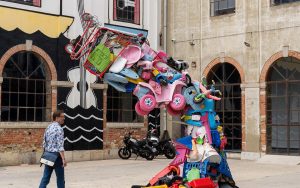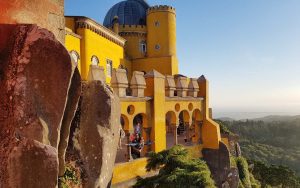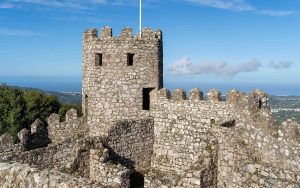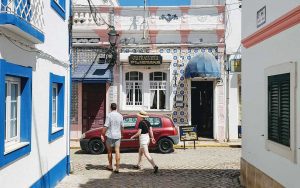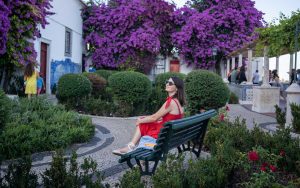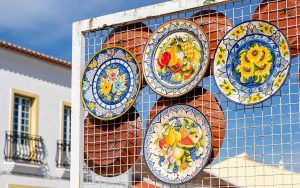Viana do Castelo is a place closely intertwined with the sea. Fishing boats destined for the cod-rich waters near Greenland once left the port of this small city in the northwest of Portugal, and their legacy has left its mark on the people, culture and cuisine.
Feel the warmth of the locals who call this charming northern city home. Feast of fresh seafood with vinho verde wine, or try local sweets and regional dishes. Explore history at local museums and historic landmarks. And seek out the wild beauty of the Costa Verde (Green Coast). there’s no better place to appreciate Viana do Castelo than from the top of Santa Luzia hill. Up here you can see witness where the city and river kiss the open sea.
Contents
ToggleWhy visit Viana do Castelo?
There’s more than enough in Viana do Castelo for a 24 or 48-hour stopover. It’s a must-stop on the way to Galicia, Spain, or a great coastal detour on the way to Peneda-Gerês National Park.
A great excuse to visit is the annual Romaria de Nossa Senhora d’Agonia, which is a vibrant, fun and colourful festival every August that shows off the traditional costumes and culture of the region.
Viana do Castelo is famous for its embroidery and filigree jewellery, so if you have an interest in beautiful things and Portuguese artisans this town is a must-visit.
And, if you want to explore ancient civilisations, Viana do Castelo has been inhabited for more than 7,000 years, and you can visit a Celtic settlement strategically placed atop the nearby hill.
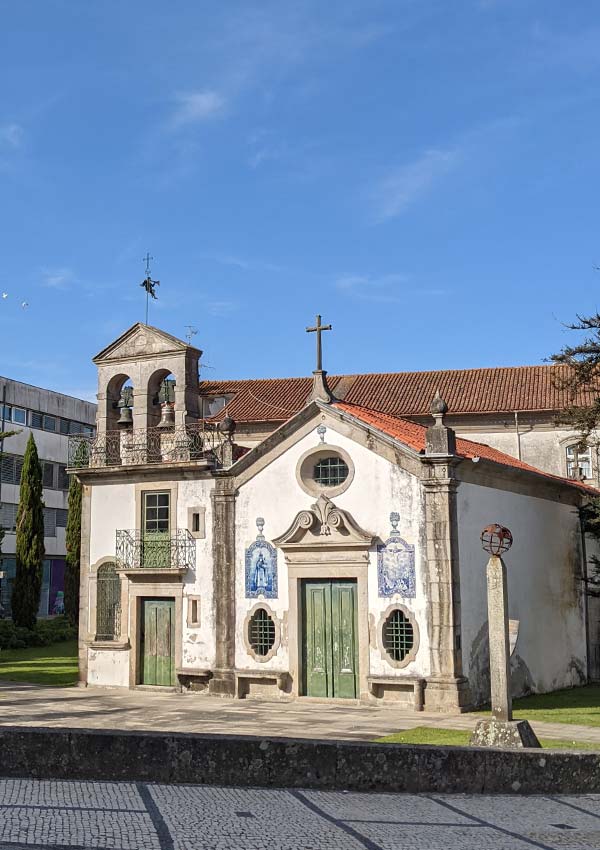
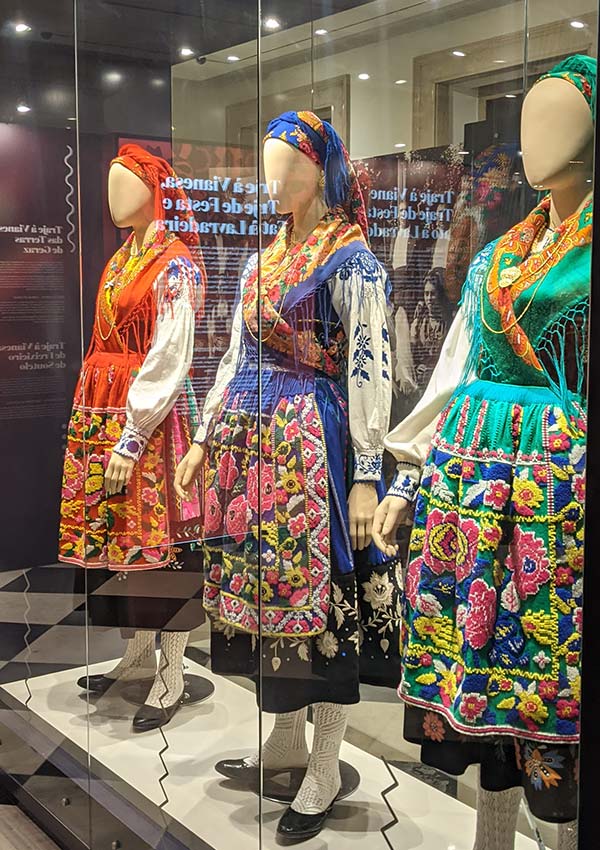
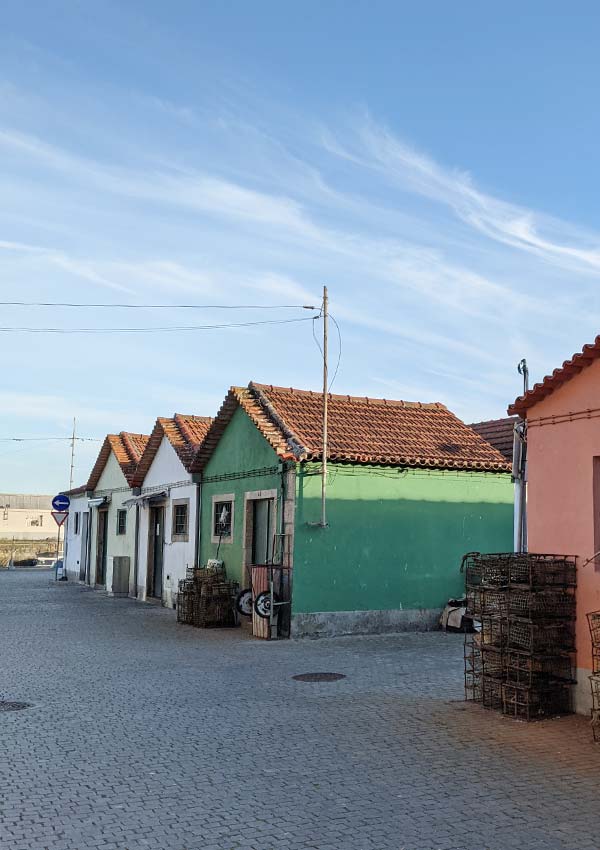
What does Viana do Castelo mean?
The name literally means “Viana of the Castle”. Though there is an origin story about a shy Princess called Ana who sat in a castle tower on the hill. A lovestruck young man who would tell everything “Vi Ana!” (“I saw Ana”) whenever he saw her.
RELATED BLOG: Where to eat in Viana do Castelo
Best things to do in Viana do Castelo
1. Take in the views from the Santuario de Santa Luzia

Looming majestically above Viana do Castelo, the Santuário de Santa Luzia is a beautiful testament to faith, beauty, and human ingenuity. More than a sanctuary for pilgrims, this beautiful basilica – which was inspired by Sacré-Cœur in Pairs – offers a breathtaking panorama of Viana do Castelo and the vast Atlantic Ocean. Ascend up Santa Luzia hill by foot, car, or by Portugal’s longest cable car to admire the church, created in a grand Neo-Romanesque and Neo-Byzantine architectural style, and enjoy the magic of Viana.
Need to know: The cable car is cheap – €2 one-way or €3 return – but has limited hours.
2. Party at the Romaria de Nossa Senhora d’Agonia festival
Every August the Romaria de Nossa Senhora d’Agonia brings a vibrant, colourful and fun party to the city streets. While technically a religious festival that celebrations the patron saint of Viana do Castelo – Nossa Senhora d’Agonia (Our Lady of Sorrows) – these days it’s a fusion of faith, folklore, and cultural heritage with concerts, parades, processions, folk dancing, and fireworks. The streets come alive with colour and music as locals don traditional costumes adorned with bright embroidery and filigree gold. The highlight (for me, at least) is the Desfile da Mordomia, a parade where hundreds of local women parade in traditional clothing – apparently it’s the biggest public display of gold in the world, as they all wear their heirloom pieces.
3. Admire hand crafted beauty at the Traje Museum

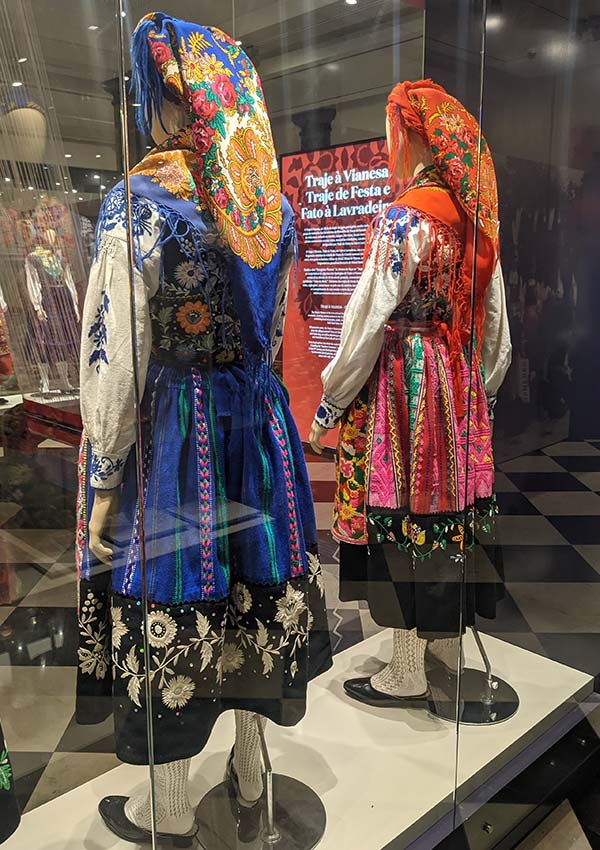


One of my favourite museums in Portugal is the Museu do Traje in Viana do Castelo. I think this region in the north of Portugal has the most beautiful traditional clothing and dresses in the entire country – and they know it. Within the building you’ll find beautiful displays with traditional, intricately embroidered skirts, shirts, aprons and more worn by peasants, fishermen, farmers, and the nobility. Each outfit reflects distinct elements of the region’s customs, crafts, and social practices. There’s a room filled with traditional filigree gold discover, and temporary exhibitions highlighting ethnographic traditions.
4. Wander the old town



As a small historic city, the old town of Viana do Castelo offers a glimpse back in time. Wander through the cobbled streets and narrow alleys, admiring the architecture, tiles and signage that reveals the city’s rich heritage. Don’t miss the elegant façade of the Antigos Paços do Concelho, the former Town Hall, or the nearby Chafariz, a fountain adorned with intricate sculptures. Visit the Igreja Matriz church with its imposing bell towers, and the Cathedral, a 15th-century Romanesque and Gothic church. Slow down in Praça da Republica and stop for a coffee while people-watching.

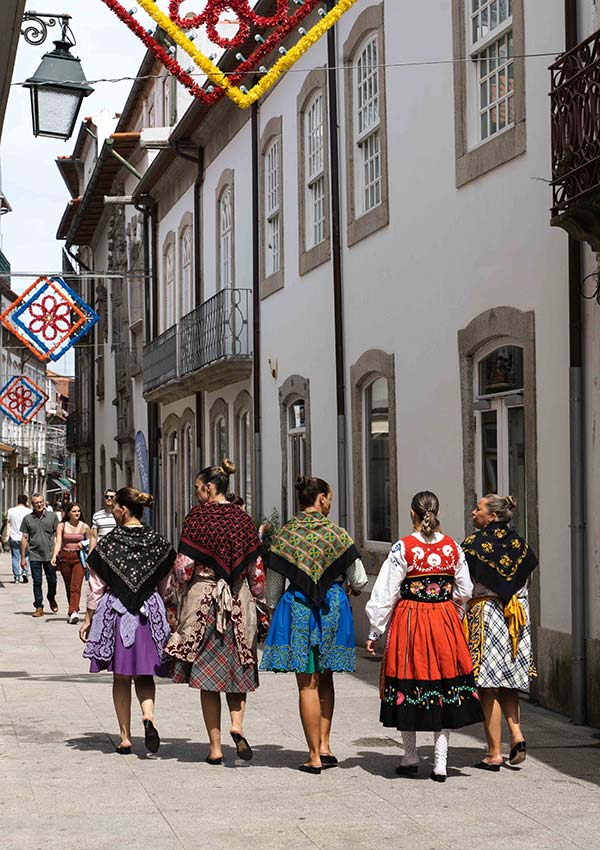

Related Blog: How to spend 48 hours in Porto
5. Kayak down the Lima River

Soak up the natural beauty of the Costa Verde as you paddle along the Lima River. Pass by lush greenery and picturesque landscapes, charming villages and verdant valleys gaining a unique perspective of the region’s idyllic countryside. You can join a guided kayak experience just outside of town. Alternatively, you can join a stand-up paddleboard tour on the Vez River also nearby.
6. Eat fresh seafood



As a port city set on the Atlantic Ocean, Viana do Castelo has a long sea-faring history. It’s the only town I’ve seen in Portugal where you’ll see women with wheelbarrows of fish standing on the streets selling fresh seafood most mornings. Around town you can find local restaurants serving up fresh fish, shellfish, prawns, and more. You could try a simple grilled fish, or the local Arroz de Polvo à Moda do Minho (local style octopus rice), served with a glass or bottle of vinho verde, the effervescent and refreshing local white wine.
Related Blog: Where to eat in Viana do Castelo
7. Buy Viana embroidery



Viana’s colorful and intricate embroidery style links the traditional dress of local peasant women to the present. You’ll see beautifully embroidered tablecloths, towels, and household items, plus shirts, skirts and traditional dress for sale at local artisan shops. Usually the motifs will be hearts, flowers, leaves and inspirations from nature in a tri-colour palette with white, red, and blue – but not limited to this! If you want to take home a unique, truly Portuguese souvenir, the treasured cultural tradition of Viana embroidery is a good idea.
In town, look for the official “Bordado de Viana do Castelo” label on items. You can shop at Marta Prozil, Casa Sandra, and ATenda Loja de Artesanato.
8. Learn to kitesurf
Glide across the waves and feel the rush of wind in your sails when you give kitesurfing a go. There’s a school just south of Viana do Castelo at Praia de Cabedelo where you can learn how to kitesurf with the help of skilled instructors. Here steady winds and a wide sandy beach make for the perfect conditions.
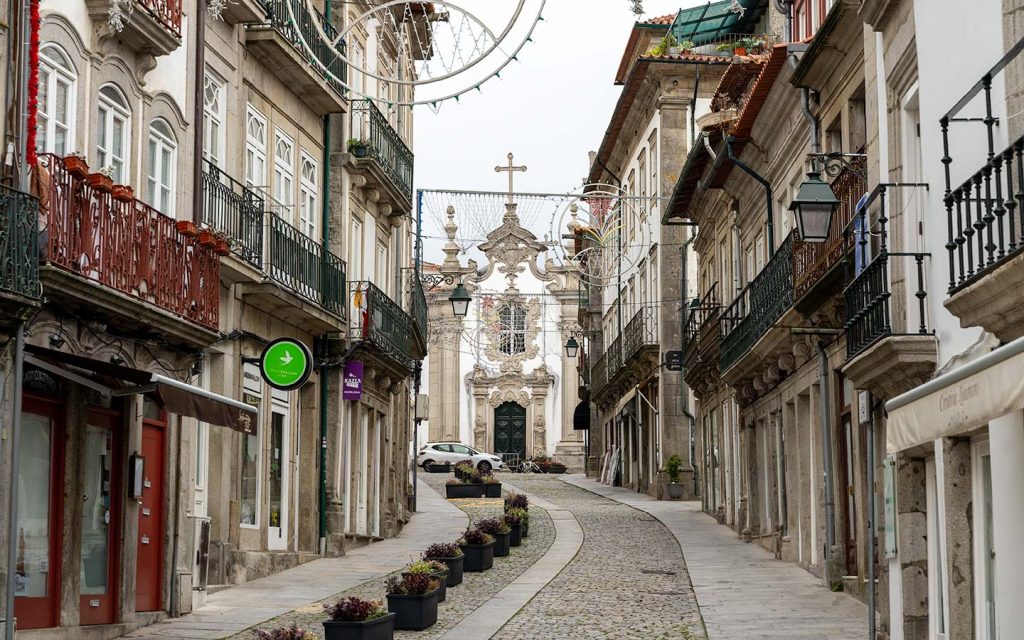
Related Blog: Where to eat in Guimarães: the best restaurants and taverns
9. Admire the tiles within Igreja de Misericórdia

Considered one of the finest examples of the Baroque in the whole of Portugal, this 16th-century religious landmark is a stunning blend of Renaissance and Manueline styles. The façade of the church is adorned with ornate sculptures and intricate azulejo tiles, and inside you’ll find all the Baroque artwork and more tiles.
10. Visit beaches around Viana do Castelo

Set at the mouth of a river estuary, Viana do Castelo is close to the open ocean and there’s a few stunning beaches to explore. One of the top picks is Praia do Cabedelo, just south of the city, renowned for its golden sands and consistent winds, making it a paradise for kitesurfers and windsurfers. Or north of the river you’ll see why this stretch is called Costa Verde (Green Coast), where wild vegetation stretches down to the down. Praia do Norte is easy to access, while Praia de Afife offers a more secluded and tranquil escape, just 12km north.
11. Explore maritime history with the Gil Eannes Hospital Ship

Originally built in Viana in 1955, this hospital ship served as a vital support vessel for the Portuguese cod fishing fleet in Newfoundland and Greenland. For over three decades, the Gil Eannes played a crucial role in providing medical assistance and facilities to the fishermen during their treacherous voyages. It also served as a mail ship, tug, and icebreaker for the fleet. Today, the ship is a symbol of Viana do Castelo’s maritime heritage and the museum ship lets you hop back in time, exploring the well-preserved decks, cabins, and medical facilities.
12. Explore the pre-Roman settlement of Citânia de Santa Luzia
Nestled on the slopes of the Santa Luzia hill, after visiting the church you can also see this ancient archeological site in Viana do Castelo. The pre-Roman settlement dates back to the Iron Age and is believed to have been inhabited by the Celtic people from the 4th century BC to the 1st century AD. At Citânia de Santa Luzia you can explore the remains of circular stone houses, defensive walls, and cobbled streets, gaining insight into the daily life and architectural practices of the ancient Celts.
13. Visit the Museu de Artes Decorativas

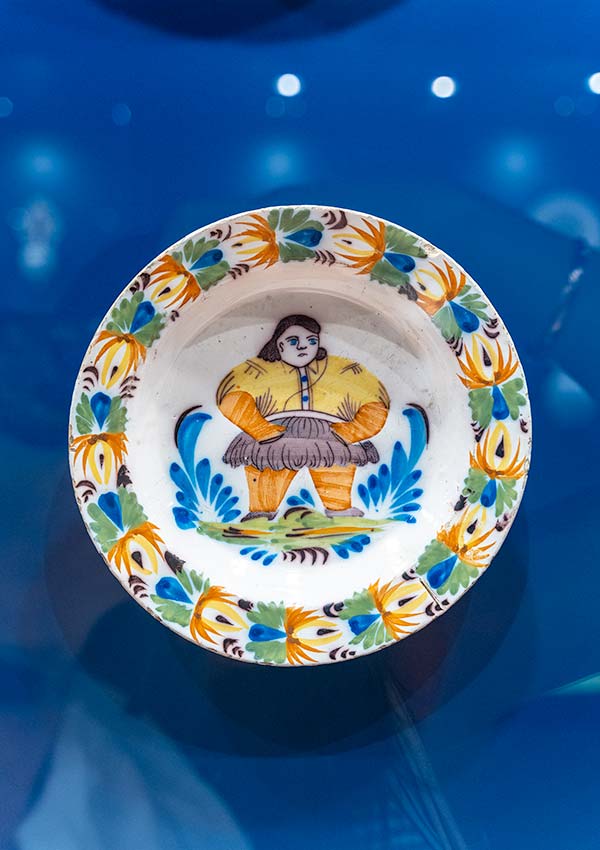

If you have any interest in ceramics, tiles and furniture from the 17th and 18th centuries, make time to explore the Museu de Artes Decorativas (Museum of Decorative Arts) located in Largo de São Domingos. Within the walls you’ll find Portuguese earthenware and ceramics from Fábrica de Louça de Viana (1774-1855), Indo-Portuguese furniture, and paintings by Portuguese artists.
14. Stomp around the Forte de São Tiago da Barra
Perched strategically on the coastline, Viana’s fortress was originally built in the 16th century to protect the city from sea invasions. Over the centuries, the Forte de São Tiago da Barra has undergone several modifications and expansions, forever being part of the city’s maritime defense system. The Forte is open Monday to Friday and it’s free to enter and explore.
15. Shop for filigree jewellery


While wandering around the historic core of Viana do Castelo you’ll no doubt notice the high number of jewellers. While Viana do Castelo has never been a jewellery producer, the town’s main festival, Romaria d’Agonia, in August is a showcase of traditional Portuguese gold jewellery. Look in the windows and you’ll see filigree gold earrings, necklaces and more. The oldest style of jewellery is the Viana bead, or contas de Viana. Women would buy – or receive – these one by one, threading them onto wool.

Where to stay in Viana do Castelo
How to get to Viana do Castelo
The closest airport to Viana do Castelo is Porto airport. It’s a 45-minute drive.
From Porto
Approximately 14 trains depart Porto for Viana do Castelo each day, and the journey takes around 80 minutes. Alternatively, it’s a 55-minute drive.
From Lisbon
It takes just over 3.5 hours to drive to Viana do Castelo from Lisbon. If you want to take public transport, there are direct trains but it’s usually faster to change services and it’ll take at least four hours to get there.

Visiting Viana do Castelo? Don’t miss my guide on where to eat in Viana do Castelo
Read next…


